An improved feeding and bedding routine with two new KUHN machines is helping to drive labour and forage efficiencies for an Aberdeenshire suckler herd.
Feeding and bedding times have been halved which is saving valuable labour time and improving herd health.
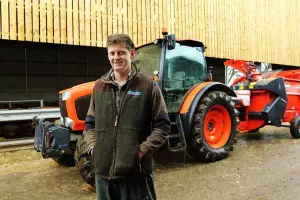
Farm manager, Stephen Allan of J & W F Lind runs a multiplier herd for The Stabiliser Cattle Company, with 250 suckler cows at Overton of Keithfield. He recently invested in a KUHN Profile feeding wagon and a Primor straw bedding machine to reduce the farm’s labour dependency for feeding the herd and bedding the sheds three times a week.
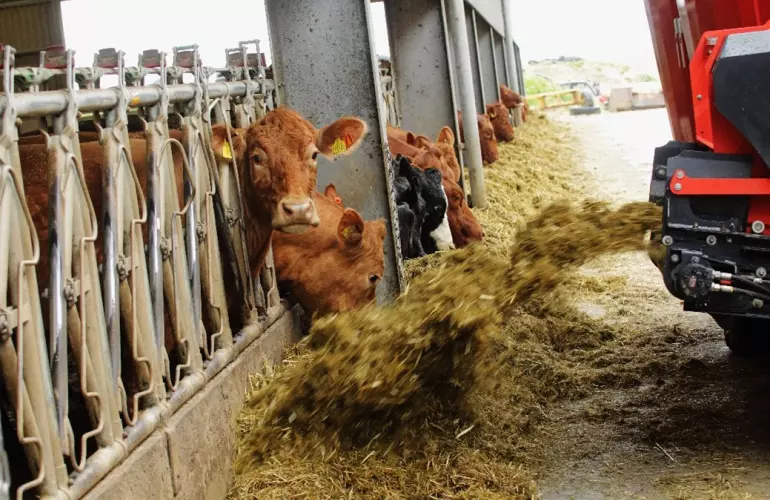
“We had new buildings five years ago and to thoroughly bed both the new and old sheds was taking the best part of a day’s work. We had an old feeder wagon that was inefficient, so when both KUHN machines were offered by our local dealer Ravenhill, we made the investment to help the team,” he explains.
Herd health is paramount as a high percentage of the herd is sold for breeding. Mr Allan appreciates the benefits of the new machinery, but says the farm takes a practical approach with its purchasing policy.
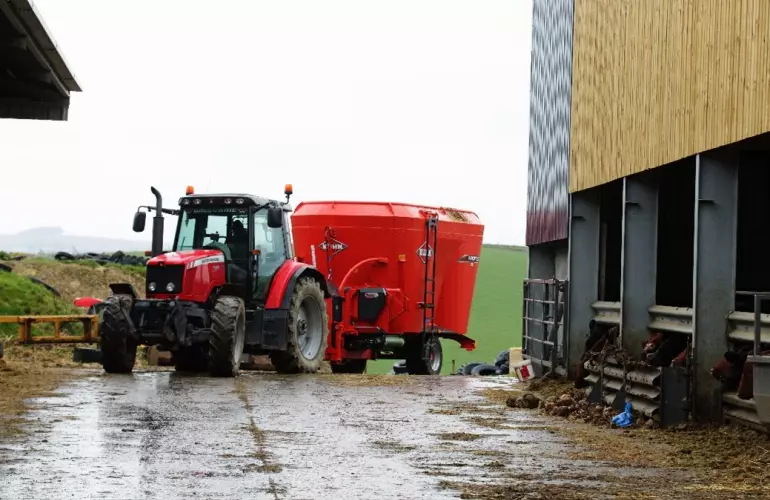
“We want to get the most out of machines and, as I see it, that depends on ease of use and maintenance, dealer support and build quality. Most machines are built well these days, but we have found Ravenhill to be a very supportive dealer and KUHN has a reputation for quality materials and a reliable parts service in the UK, which is what you need if something goes wrong on Christmas day. That said, we have had these machines for six months and both have been faultless.”
The cows are fed a forage-only diet with a basic mineral supplement. The Stabiliser youngstock are housed separately and are fed a kilo of homegrown barley in addition to the grass ration. The heifer herd is housed on a separate farm, but also benefit from the same forage focused diet.
“The Profile is used to feed 250 cattle and 150 youngstock. This would take a member of the team an entire day with the old machine. Now one person can feed a silage-only ration to the cattle, before mixing and feeding out a second ration with barley for the youngstock in less than four hours.”
The speed, accuracy and manoeuvrability of the Profile are all helping to drive the efficiency of the feeding routine. However, the accuracy is of greater importance to Mr Allan, who is firmly focused on making best use of homegrown forage.
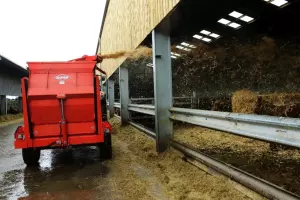
“We analyse our silage and last year it was 16% protein. Every year is different and we are monitoring closely for the optimum time to apply fertiliser in order to achieve the best quality grass with the lowest inputs.”
The herd grazes for much of the year and when cows are housed and calves are weaned, they are given a 50/50 straw silage diet. When youngstock have been weaned off they are put on a maintenance level ration which includes a little barley. However, Mr Allan is keen to minimise the use of anything other than grass in the diet.
“Silage, straw and barley is a great way of slowly pushing the quality of feed the youngstock are on. Heifers are only given one kilo of barley per head plus silage and straw, but this can change slightly depending on silage analysis. This means the focus is always on producing the best silage to reduce the need for cereals.”
With the new Profile he is able to see exactly what is being fed out and can make tweaks to maximise forage efficiency. This largely depends on the weight of the cows and what he believes is needed to optimise the amount of food for the developmental stage of the animal.
Labour efficiencies further extend to the farm’s bedding routine where the new KUHN Primor has halved bedding times. The three times a week routine has also been complemented with additional bedding at calving because the machine is much easier and quicker to set up and operate than its predecessor.
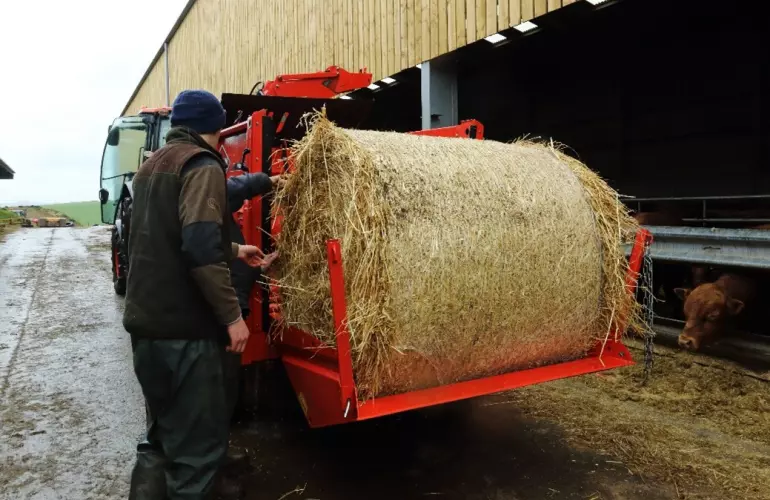
“Keeping pens clean and generously bedded out is of paramount importance to herd health. We invested in the Primor to enable us to provide calving pens with supplementary bedding, but also to reduce the need for staff to enter pens. This is in the interest of both cow and employee welfare and we have also been able to cut bedding times to less than two hours which is freeing up time for other work.”
He uses 36 four-foot bales and is able to bed out 250 cattle and 150 youngstock in the two hour window. The Primor is also on hand for staff to blow a little more straw in between.
“We find that adding a little more to calf pens helps to relax them. Calves tend to huddle near walls for warmth and comfort so blowing extra straw against the walls improves calf comfort.”
